- Author Jason Gerald [email protected].
- Public 2024-01-19 22:11.
- Last modified 2025-01-23 12:04.
The automatic transmission system is one of several hydraulic systems in a car. To maintain your vehicle's systems, you need to check the transmission fluid periodically to make sure there is enough available for the transmission to function properly. Read this article to find out how to check and add transmission fluid in an automatic transmission vehicle in detail.
Step

Step 1. Park the vehicle on a flat surface and the engine is running
It's a good idea to get into each gear for a bit before parking the car.
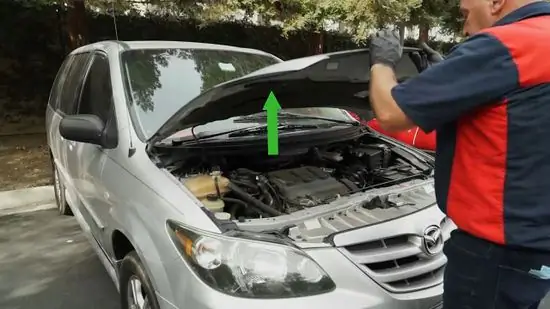
Step 2. Open the hood
There is usually a lever in the driver's area to open the hood. If you can't find it, try reading the vehicle manual.
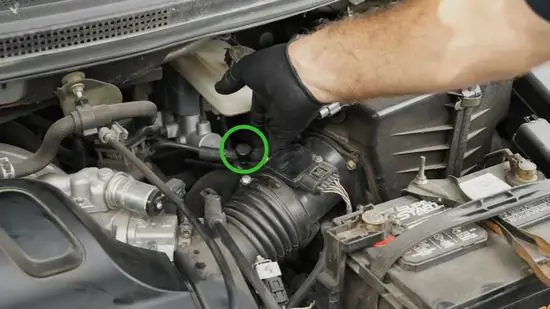
Step 3. Look for the automatic transmission fluid pipe
On most new cars, this transmission fluid pipe is labeled; otherwise, read the user manual to find it.
- For rear-wheel drive vehicles, the dipstick is usually located at the back of the engine, above the valve cover.
- In front-wheel drive vehicles, the dipstick is usually located in front of the engine and connected to the transaxle (transmission shaft), sticking out straight from the transmission.
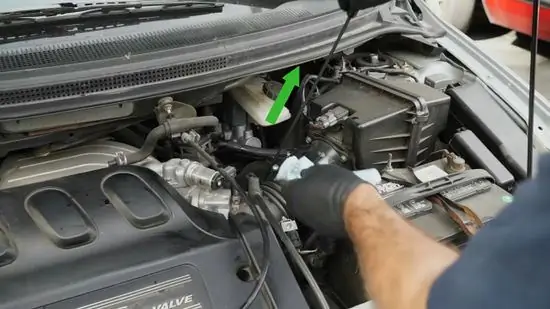
Step 4. Pull out the transmission fluid dipstick
In most cars, the vehicle must be in neutral with the parking brake engaged, and the transmission hot. Wipe the dipstick with a tissue or rag, reinsert the dipstick, then pull it out again to check the transmission fluid level in the system. The transmission fluid must be between two labels labeled "Full" and "Add" or "Hot" and "Cold".
Usually, you don't need to add transmission fluid. However, if the transmission fluid level is far below the "Add" or "Cold" line, there may be a leak in the system and needs to be professionally checked
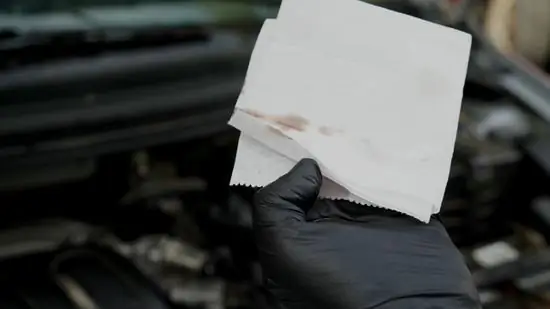
Step 5. Check the condition of the transmission fluid
Good automatic transmission fluid is usually red (although sometimes pink or light brown), without bubbles or odors. If the following conditions occur in your car, it means that your vehicle needs to be serviced.
- If the transmission fluid is brown or smells burnt, it is likely that the fluid has overheated and is no longer able to protect the transmission as designed. Transmission fluid can be tested by dripping some on a clean tissue and waiting 30 seconds for it to spread. If the liquid does not spread, the vehicle's transmission will need to be serviced, or it will be seriously damaged.
- If it looks milky brown, it means that the transmission fluid has been contaminated with coolant from the radiator through a leak in the automatic transmission cooling system. Better take the car to a repair shop.
- If the transmission fluid is foamy or bubbly, it means that too much fluid in the transmission has been used.
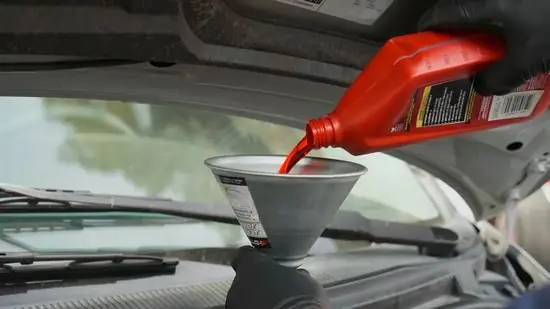
Step 6. Add transmission fluid, if needed
Add the liquid little by little, and check the level periodically, until it is at the right level.
If you drain the transmission fluid completely, you may need to add between 3-4 liters of transmission fluid. If not, check the dipstick regularly so that transmission fluid doesn't run over the tray

Step 7. Start the car and get into each gear, if possible
This process circulates the new transmission fluid and lubricates each gear well. Start by starting the engine and applying the parking brake, and if possible, keep the wheels off the ground. Enter the transmission from first to third gear, including Drive, Overdrive, and Reverse gears. If so, install the parking brake and allow it to warm up the transmission fluid.
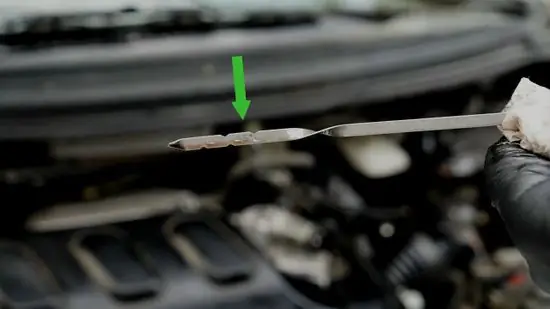
Step 8. Check the dipstick again to determine the amount of liquid needed, if any
Check the dipstick as the transmission fluid level may drop as it circulates through the clutch pack thereby expelling air from the system. Add liquid as needed until it reaches the right height.
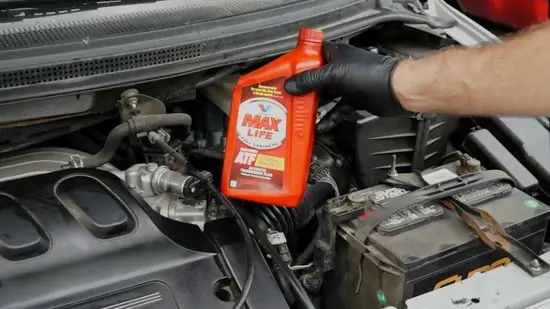
Step 9. Add the required amount of transmission fluid until it reaches the proper height
Depending on whether you're just increasing the fluid level or replacing the entire bin with new transmission fluid, at this point you'll need an extra stock of transmission fluid.
- If you're simply increasing the transmission fluid level, it's best to pour only 1 liter of fluid, or even less.
- If you drain the liquid from the bin, remove the bin and replace the filter. You may need 4-12 liters of transmission fluid, depending on the make and model of the vehicle.
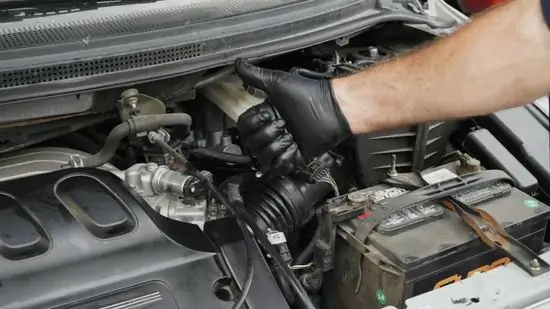
Step 10. Done
The car's transmission fluid is now ready and the sound of the vehicle will sound smooth.
Tips
- Read the user manual when your automatic transmission fluid needs to be changed. If the vehicle often goes through the mountains or carries heavy loads, it is better to change the transmission fluid sooner. Whenever the transmission fluid is changed, the fluid filter must also be replaced.
- Always use transmission fluid according to the car manufacturer's instructions based on the make and model of the vehicle.






